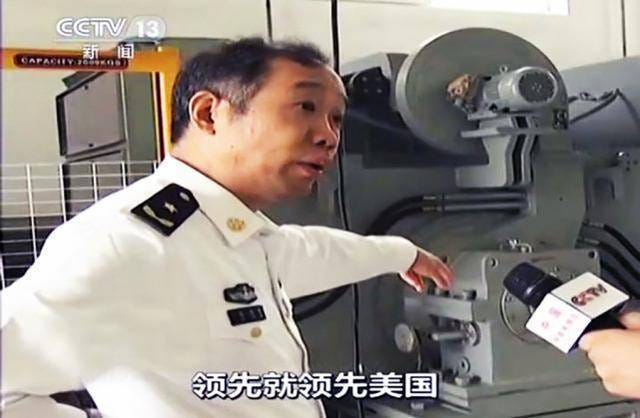Discourse Power | June 19, 2022
A new Chinese aircraft carrier: cower in fear, Taiwan is too small, time is China's friend, and a callback from Mao
Happy Juneteenth,
On Friday, China debuted its third and most advanced aircraft carrier.
Named "Fujian" after the southeastern coastal province, it is the country's first domestically designed carrier with a built-in electromagnetic catapult-assisted launch system, a major leap in comparison to the traditional ski-ramp that allows for larger types of bombers with a much larger load of fuel and armaments.
Despite the fact that I stated in Thursday's edition that Discourse Power would be on hiatus this week due to China in the Middle East and Africa conference on Wednesday (all welcome to register and attend here), my social(ist) media feeds have been overflowing with jubilant cries from patriotic Chinese netizens and party-state media celebrating the Fujian, so I wanted to share some of what I have seen below.
Editors and academics - consider including a hyperlink and a mention in your own works if you find any of the content shared in this newsletter useful.
Thank you for reading,
Tuvia
"The Fujian aircraft carrier has been launched! The US is in the midst of a tremendous crisis, while China has entered a New Era!"
Leftist blogger Mr. Li Guangman, who you may recall from last year when he was electromagnetically catapulted from obscurity after his essay "everybody can feel that a profound change is taking place" was widely disseminated in party-state media, perfectly captures the triumphant tone.
Li writes (excerpts):
"How fortunate we are to be living at a time when the world is undergoing great changes unseen in a century, as America's hegemony crumbles and a New Era hails to China.
“The Liaoning Type 001, China's first aircraft carrier, was converted from a foreign [Soviet] aircraft carrier; the Shandong Type 002, was China's first completely self-designed and manufactured aircraft carrier with a ski-jump takeoff ramp; and now, the third carrier, the Fujian Type 003, is a world-class carrier with an electromagnetic catapult, complete with blocking devices.
“Liaoning and Shandong were named after neighboring provinces running from north to south along China's coast, so why did they suddenly jump over Jiangsu and Zhejiang straight to Fujian?
“Is there more to the ship's name than meets the eye? Taiwan, China's sole province that has yet to be reunified, is located across the Fujian Strait, implying that the new carrier was meant to have a larger historical purpose.
“From a broader historical perspective, the launch of the Fujian carrier has elevated the Chinese Navy as the world's second-greatest navy. The powerful Chinese Navy will undoubtedly sail into the deep blue sea to safeguard our national sovereignty, security, and development interests.
“China’s navy will play an important role in maintaining world peace and establishing a new global order, with which China will truly be oriented towards the vast expanse of the high seas and become a great maritime power 海洋大国.
“Concurrently, we will find that the United States, the world's sole hegemon, appears to be in the midst of a catastrophic financial crisis.
“Today's China is not the poor and weak China of days past; it is no longer a China that can be humiliated, plundered, and oppressed at will by Western countries. The current international situation favors China greatly.
“Not only Russia and Europe, but also the US is being dragged down by the protracted conflict between Russia and Ukraine. And, while the US expects that the war will weaken Russia, is it not really weakening America too? The US is currently experiencing a hyperinflationary crisis that will almost surely result in financial collapse and economic recession.
“The launch of China's most advanced aircraft carrier, the Fujian, will be remembered as a watershed moment in the country's rise to power, a major milestone remembered with dread in the US as the moment when the balance of power in the Indo-Pacific was dramatically reversed. China's objective to liberate Taiwan and reunite it with the motherland now possesses a military asset that no other country can reckon with.
“Be it the United States, Japan, or Australia - all will cower in fear 忌惮 at the sight of China's military prowess, an ever-increasing Chinese force that will become the specter that haunts their innermost fears.
“China can now declare to the rest of the world that anyone who interferes with its liberation of Taiwan will be annihilated 消灭, as will anyone who violates China's sovereignty in the South China Sea, East China Sea, or the Yellow Sea.
“China is steadily advancing its national strategy, whether in Latin America or the Pacific's depths, Southeast Asia, the Middle East, Africa, or Central Asia. China's grand ambitions are destined for the seas, Asia, and Europe.
“With the arrival of the Fujian aircraft carrier, I am confident that the day we see our own stealth bomber and nuclear-powered submarine developed and deployed is near; a nuclear-powered aircraft carrier built in China will not be far behind.
“This day belongs to China, and China is marching confidently into a New Era!” (Li Guangman Says)
“With the launch of the Fujian, I believe we can now look forward to the Type 004 aircraft carrier. Is it going to feature nuclear propulsion? In terms of tonnage, will it be a supercarrier like the USS Ford? We have a lot to look forward to”
Dr. Jin Canrong, a celebrity scholar and professor at Renmin University of China's School of International Studies, has much bigger plans for Fujian than for fighting tiny Taiwan.
Excerpts from Weibo posts published by Prof. Jin on his personal account on the day of the launch, June 17, 2022:
"The Fujian is without a doubt the world's most advanced conventional-powered aircraft carrier today, with a combat capability far exceeding that of the Liaoning and Shandong aircraft carriers." The day when China's navy becomes a world-class navy is rapidly approaching.
“Some people in Taiwan have claimed in the last two days that the new aircraft carrier is meant to deal with the island. There's no need for you guys to get too ahead of yourself; you don't need a ship like this to deal with a situation like yours;
“it's used against battle groups of Nimitz-class aircraft carriers and the like. Would an Olympic champion bother to compete against you, a county-level athlete? This is totally unnecessary.
“Of course, the Fujian has only just hit the water. Before it can begin to form a fighting capability, there is still a lot of work to be done in the following stages, such as outfitting and sea trials. Surely, this will not happen in the near future, so we must take things one step at a time.
“With the launch of the Fujian, I believe we can now look forward to the Type 004 aircraft carrier. Is it going to feature nuclear propulsion? In terms of tonnage, will it be a supercarrier like the USS Ford? We have a lot to look forward to, in my personal view.
“Finally, I'd like to express my condolences to Fujian province for missing out on the chance to name a nuclear-powered carrier after them today. And to Jiangsu and Guangdong, I say don't be concerned; the day when we see nuclear-powered carriers is approaching.” (Weibo)
“Our onshore missile forces have an absolute superiority, with China's multiple Dongfeng missiles capable of crippling US aircraft carriers in an instant”
Mr. Hu Xijin, the retired editor-in-chief of the Party tabloid Global Times, is in it for the long haul and advises the Chinese people not to let the Fujian aircraft carrier divert their attention away from China's own development.
“With the deployment of the Fujian, China's position behind the US, as the second-largest force of surface combatants [A naval vessel designed for operation on the marine surface], has become more evident.
”Of course, the gap between us and the US Navy remains significant; the US Navy currently has 11 aircraft carriers, all of which are nuclear-powered and have a displacement greater than the Fujian.
“The Fujian is similar to the USS Kitty Hawk, which was commissioned in 1961 and decommissioned in 2009 after stationing a long time in Yokosuka, Japan. It was the US aircraft carrier with the greatest deterrent force against China at the time.
“While the Fujian is similar to the USS Kitty Hawk in terms of power and tonnage, the USS Kitty Hawk is clearly outclassed in terms of shipboard systems sophistication. Conventional propulsion is currently not a constraint for Chinese aircraft carriers to carry out strategic deterrence in the Western Pacific because the Chinese Navy does not have the need to conduct ultra-long-range operations and power projection missions. The construction of nuclear-powered aircraft carriers by China will give the navy more leeway in the future.
“Aircraft carriers are both an iconic symbol of national resolve and strategic deterrence, as well as the most readily available fist 拳头 that a major power can throw out. Every time China launches an aircraft carrier, the US comes to mind, but the aircraft carrier is not the only determinant of victory or defeat once the two countries go to war.
“China may not be able to surpass the US in terms of aircraft carrier capabilities for many years to come, but our overall combat capabilities in the Western Pacific may give us an advantage over the US.
“It is no longer difficult for any given military power to destroy any visible target, which means that if China and the US go to war, both sides will be able to destroy all of the aircraft carriers that the other side deploys in the war zone. Our onshore missile forces have an absolute superiority, with China's multiple Dongfeng missiles capable of crippling US aircraft carriers in an instant.
“This trend will emerge gradually as the US military faces increasing pressure in the Western Pacific and is forced to heed some of China's warnings. China's defense budget is currently only 1.3% of GDP, and raising it to the NATO standard of 2% would add to it an additional USD 100 billion per year.
“With China's target of doubling its GDP in the next decade or so, the increased military spending could provide the navy with more world-class combat platforms for a fraction of the budget.
“It is unlikely that any of the neighboring Asian countries will be able to challenge a 21st century China alone, and China's naval development is not targeted at any of its neighbors. Even with regard to Japan, it is time for the Chinese people to gradually change their mindset. I also don't think China is developing aircraft carriers just so it can someday spar with the US Navy. China's national power is a system 体系, and the aircraft carrier is another link in the chain that must be added.
“That is why we believe that the Chinese people must focus on their own development while maintaining full strategic confidence and patience. Time is China's friend as long as we continue to develop, and development will bring us more strategic resources, including more first-class aircraft carriers.” (Hu Xijin Observer)
“Let those reactionaries within and without tremble in our presence! Let them say we can't do this or that; the Chinese people's unyielding efforts will steadily achieve their objectives!”
Chairman Mao was all the rage this week, not only in the Cyberspace Administration of China's rationale for the draconian dynamic zero COVID policy* but also in Guancha's military affairs reporter Mr. Wang Shichuan's very technical description of the Fujian aircraft carrier.
* h/t Bill Bishop via Sinocism

Excerpts:
“A poem scribbled by Chairman Mao reads: "The eternal Kunlun mountains, when you came into being, you filled the sky, experiencing every color of spring that is humanly possible.” Only the lyrical words by Chairman Mao’s pen could depict the surging emotions of China's sons and daughters as the fluttering red flag was hoisted in the heavens as the aircraft carrier of our great nation was launched from the dock and headed for the seas.
“It goes without saying that June 17 is a propitious day for "things that fill the sky " to "come into being". On this day 55 years ago, China successfully tested its first hydrogen bomb, making it the fourth country in the world to do so.
“Aircraft carriers have been on the road for a century, from the inception of the world's first aircraft carrier, the Hosho, in 1922 until the present. Today, we have earned the right to lead the world in aircraft carrier development.
“The operational capabilities of the Fujian are easy to speculate on: in pursuit of single-strike sortie generation capabilities 单波次放飞战机能力 [tell me in the comments if you know the official English translation for this term], the Fujian's full assault mode 全攻击状态 is an entire air regiment (approximately 24-26 fighters) reinforced with two Airborne Warning and Control Systems (AWCS) and two electronic-warfare (AW) fighters.
“In addition, more than 24 carrier-based Shenyang J-15B fighters or J-35 stealth fighters, as well as several helicopters, can be housed in the Fujian's hangar bay. The Fujian could reach up to 50 carrier-based fighters at full capacity, which is roughly the same as two regiment-level units according to the reformed strategic doctrine. This is on par with the Nimitz and Ford-class carriers.
“While the US still has more Nimitz-class aircraft carriers, the Fujian will have stealth fighters, fixed-wing AWACS, AW fighters, helicopters, and unmanned aerial vehicles (UAVs) on par with the world's leading aircraft fleets.
“The proximity of the Fujian to the US nuclear-powered aircraft carriers in terms of fighting power will cause unprecedented apprehensiveness 焦虑 for the US military, which is used to crushing its opponents in terms of technology and equipment.
“Following the deployment of our newest ship, the technical and tactical advantages of the US carrier fleet, the cornerstone of US maritime hegemony, may have been equalized.
“The launch of today's aircraft carriers has proven a basic truth: we can build modern supercarriers. Aircraft carriers, as previously said, have symbolic value in addition to their military and political significance. The aircraft carrier is one such product, the result of the collective wisdom of our country's hundreds of millions of workers.
“It is not only an integral part of our national and peoples' wealth, its very existence symbolizes a sense of pride. From the Red Boat [on which the first National Congress of the Communist Party of China was concluded] to the Red supercarrier, the path of our century-long struggle undoubtedly validates the words of our comrade-teacher Mao:
“Let those reactionaries within and without tremble in our presence! Let them say we can't do this or that; the Chinese people's unyielding efforts will steadily achieve their objectives!” (Guancha).
***
For an even more detailed description of the new carrier, watch this explainer video by Mr. Su Ming, editor of Naval & Merchant Ships 舰船知识:
"In order to purge the harassment of sea bandits 海匪 and ensure the safety of our sea lanes and shipping, in order to rally the strength to recover Taiwan at an appropriate time and eventually reunify our entire territory, and in order to muster the strength to oppose imperialist aggression from the sea, we must build a strong navy systematically and gradually over a longer period of time, in accordance with industrial development and our fiscal situation"
- Chairman Mao Zedong, December 4, 1953, as seen on the web.
Playing in the Background
Discourse Power is written by Tuvia Gering, a research fellow at the Jerusalem Institute for Strategy and Security, a non-resident fellow at the Atlantic Council’s Global China Hub, and a Tikvah’s Krauthammer Fellow, specializing in Chinese security and foreign policy, and emergency and disaster management. Any views expressed in this newsletter, as well as any errors, are solely those of the author. Follow Tuvia on Twitter @GeringTuvia







